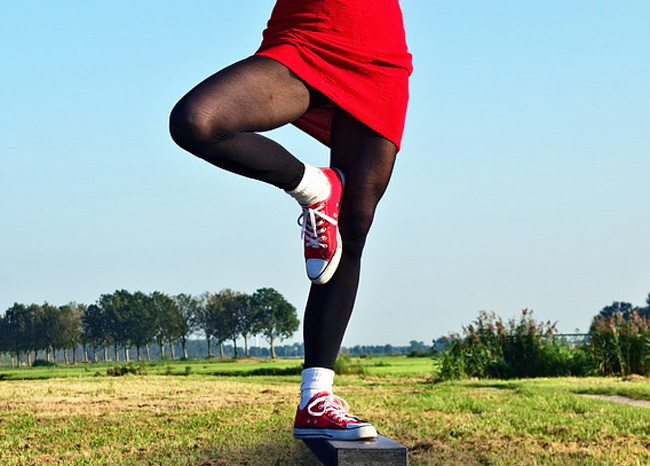The Flamingo Balance Test is total body balance test, and forms part of the Eurofit Testing Battery. The test requires participants to stand on one leg on a beam, with the other leg flexed at the knee and the foot of this leg held close to the buttocks. This single leg balance test assesses the strength of the leg, pelvic, and trunk muscle as well as dynamic balance.
purpose: To assess the ability to balance successfully on a single leg.
equipment required: stopwatch, metal beam 50cm long, 5cm high and 3cm wide (the beam is stabilized by two supports at each end, and should have a non-slip surface)
pre-test: Explain the test procedures to the subject. Perform screening of health risks and obtain informed consent. Prepare forms and record basic information such as age, height, body weight, gender, test conditions. Perform an appropriate warm-up. See more details of pre-test procedures.
 procedure: Stand on the beam with shoes removed. Keep balance by holding the instructor's hand. While balancing on the preferred leg, the free leg is flexed at the knee and the foot of this leg held close to the buttocks. Start the watch as the instructor lets go. Stop the stopwatch each time the person loses balance (either by falling off the beam or letting go of the foot being held). Start over, again timing until they lose balance. Count the number of falls in 60 seconds of balancing. If there are more than 15 falls in the first 30 seconds, the test is terminated and a score of zero is given.
procedure: Stand on the beam with shoes removed. Keep balance by holding the instructor's hand. While balancing on the preferred leg, the free leg is flexed at the knee and the foot of this leg held close to the buttocks. Start the watch as the instructor lets go. Stop the stopwatch each time the person loses balance (either by falling off the beam or letting go of the foot being held). Start over, again timing until they lose balance. Count the number of falls in 60 seconds of balancing. If there are more than 15 falls in the first 30 seconds, the test is terminated and a score of zero is given.
Scoring: The total number of falls or loss of balance in 60 seconds is recorded. Scoring tables are available in the Eurofit Manual.
The Test in Action
- The test is part of the Eurofit Testing Battery
Similar Tests
- Stork Balance Test — stand on the toes of one leg for as long as possible with the free leg resting on the inside of the opposite knee.
- One Leg Stand — the US sobriety test, stand with one foot off the ground for 30 seconds.
- Standing Balance Test — stand on one leg for as long as possible.
- Stick Lengthwise Test — balance on a stick for as long as possible, standing side-on on the balls of both feet.


 Current Events
Current Events